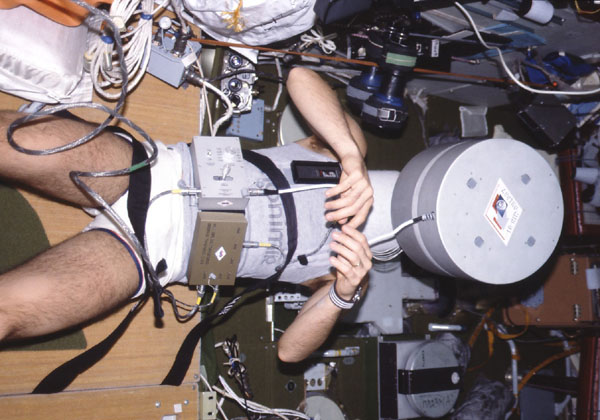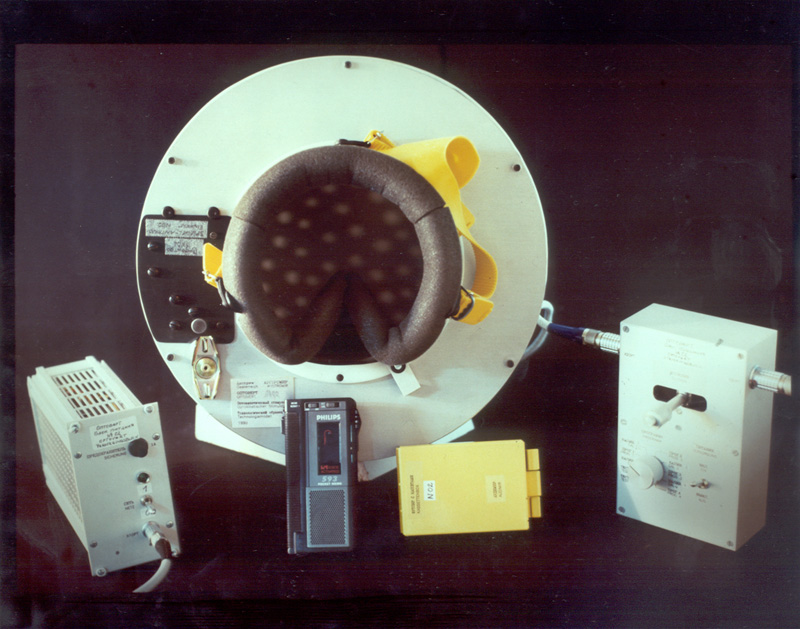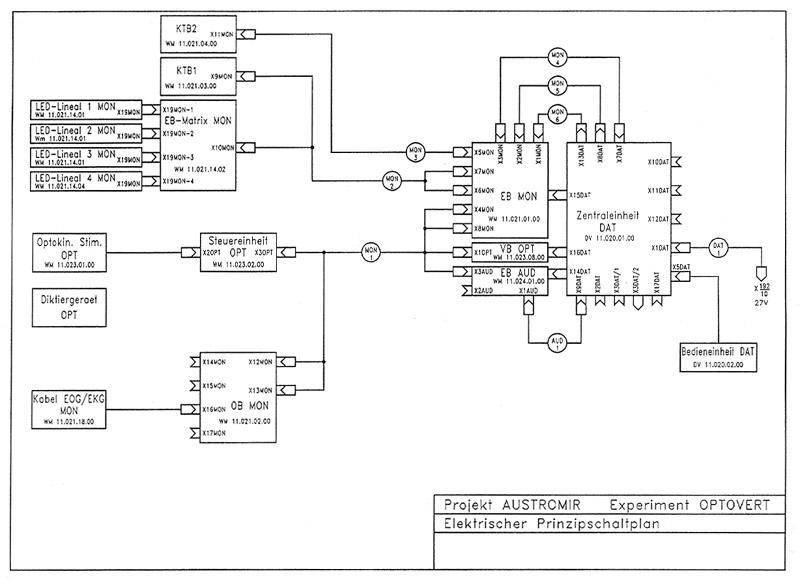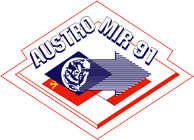Most people have more than once noted how a train next to the one they’re sitting in moves, and have a feeling that their train is actually moving. In reality, the observer is standing still and the object moves. The layman says it’s an optical illusion – the expert says it’s a linear vection.
Vection is defined as the invention of (apparent) self-movement that results from the processing of visual information about the environment’s movement. The reason for this illusion lies in the interaction of information sent from the eyes and the equilibrium organ. Based on the anatomy of archways, the information stream from the equilibrium organ wins because, although the same movement, it’s shorter. This means, the equilibrium sense doesn’t give information on whether the observer is still or moving constantly. He must therefore trust the information stream coming from the eyes.
There are generally two forms of spacial orientation: static, where the subject and the environment (object) are standing still, and dynamic, where the subject and/or the object are moving.
Objectives
Both the AUDIMIR and OPTOVERT experiments investigated man’s orientation in space. Under special simulated conditions it must be shown that the visual system in space overtakes more orientation tasks. Further investigations should give a picture about the changes in the vertical orientation. Vertical vection was given less attention till now.
Functionality, Measuring principle
During the execution of the experiment, the Austrian scientist-cosmonaut wore a so-called optokinetic simulator, a cylinder, which was fastened with elastic bands like a mask. A hemispherical projector was located inside the cylinder and a moving light pattern was projected.
As a subject, Franz Viehboeck executed the experiment floating freely as well as fastened tightly on a mat. In this way, the role of the sense organs for spacial orientation was tested.

The reaction of the eye on a moving object is known as optokinetic. Apart from the objective measurements of eye movements, the cosmonaut’s orientation senses were also collected. He also recorded his impressions on tape. The cosmonaut also showed where his point of view was with the help of a moving light pointer. The control mechanism was fastened on the cosmonaut’s belt. A switch enabled the selection of test and calibration programs as well as four automatic expiring programs for various experiment parts. An electronic memory device saved a chronological history of the directions and speeds of the pattern movements and also the control of the orientation pointer’s light diodes.
Shared equipments of the Austrian payload
DATAMIR, AUDIMIR
Results
The investigation of the optokinetic nystagmus could not support the results of French space experiements that were already available. Franz Viehböck didn’t incur noticeable changes in the stimuli speed and the speed of the eye movements. The expected change in this ratio compared with forward and backward stimulation also didn’t occur.
The ability to focus on the exact vertical in the field view was kept within an error window of 2 degrees. A discrete error adjustment can either reflect a systematic error or an indiciation of a (vestibular) input influence. The central integration centre of the static orientation also showed no conspicousness.
Data about the vertical vection in microgravity were successfully recorded with the OPTOVERT framework. Data from the vection tests show that there were no after effects during the experiments in space, just like those on earth. The vection feeling ended immediately after the stimulation ended and the dark phase in the stimulator started. Subjectively a similar lift and drop feeling like on earth without a subjective preponderance of the upward and downward movement took place. The latency investigations up to the appearance of the vection feeling brought a clear shortening for an upward vection during the second part of the experiment (vection through simulation with constant velocity). During the stimulation with constant increase and decrease of the stimulus velocity (experiment part 4, sinus stimulation), an inverse vection phenomen occurred for the first time. It showed a movement feeling in the pattern direction instead of in the opposite direction. The recording of the stimulus with the eyes and lever was concurrently done within the framework of each test, but no changes could be observed. This proved that the changes in the vection feeling led to real orientation phenomen and not a disturbance of the eye-hand coordination.
The results of the OPTOVERT investigations show that a recalibration of incoming sense information in the brain stem level as well as a re-interpretation of the meaning of this information on a higher level is required. By atypical and unclear information, a slackening of the usually tight relationship between stimulus and reactive illusion can result. Such information is the visual stimulus with constant increase and decrease of velocity, and errors in the resulting vestibular information. An example is the inverse vection that was first discovered as a new phenomen during OPTOVERT.
A small overbalance of the forward movement of the vection illusion did not take place subjectively, however, a weak intra-individual significance of the quick appearance of an upward vector illusion was observed. The question whether this result has an individual or general meaning can be answered with further investigations, even if it fits good with a hypothetical tendential increase of the orientation through the disapperance of gravity.
Practical application
Application ranges
- Diagnostics and therapy
- Selection and checkup of the state of sensor systems at persons various occupational groups
- Neuro-physiology and theoretical neurology
Application target
- Topical diagnostics and treatment checkup neurological and oto-neurological diseases
- Upgrade the quality of neuro-vestibulars selection in the flight-, space-, occupational- and sport medicine
- Investigation of troubles in the integral features of the brain
Direct interested institutions on the utilization of the experiment results
- University Clinic for Neurology, Vienna
- Institute for Biomedical Problems, Moscow
Technical characteristics
The equipment OPTOVERT consisted of the following units


Supply block (VB OPT)
This unit was delivered integrated in the central unit of the system DATAMIR.
| Mass: | 0.7 kg |
| Dimensions: | 191 mm x 129 mm x 71 mm |
| Power input: | 20 W |
Aluminium container with additive and reserve assembly
- Optokinetic stimulator
- Optokinetic projection unit
- Projection lights unit (3 pieces)
- Operating unit to control the optical stimuli
- Voice recorder
- A set of energy maintenance for the voice recorder (2 sets each with 2 batteries)
- Cassettes box with 4 audiocassettes
- Head fixing
- Reserve assurances
- Reserve drive belt for the project unit
| Mass: | 7.6 kg |
| Dimensions: | 460 mm (Diameter) x 455 mm (Height) |
Experimenters
o. Univ.-Prof. Dr. Luder Deecke (institute manager)
Dr. Christian Mueller (project manager)
Dr. G. Wiest
Dr. Claudia Lind
all: Neurological University Clinic Vienna
Sub-contractor:
Dipl.-Ing. Rudolf Theuer
TBN, Company Technical Office Novak Ges.m.b.H., Vienna
